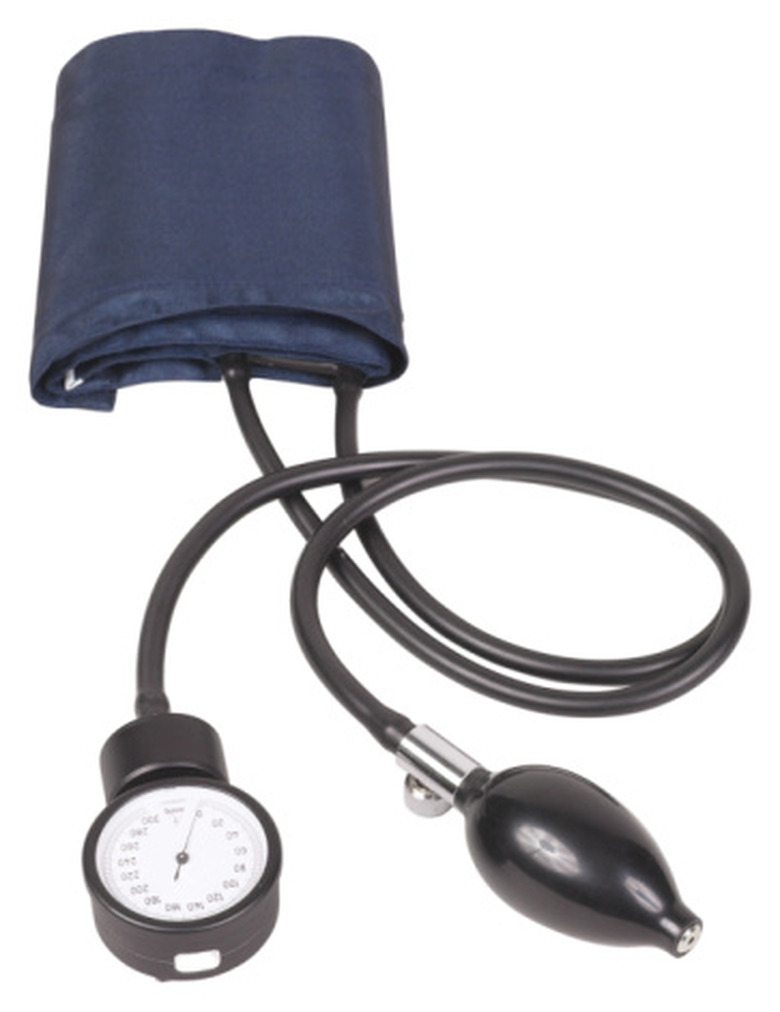How To Calculate MABP
Mean Arterial Blood Pressure, commonly abbreviated to MABP, is a function of cardiac output, systemic vascular resistance and central venous pressure. It represents the average arterial blood pressure measured during a complete cardiac cycle, and the normal value is around 70 to 110 mmHg. Measuring MABP with great precision is possible only by using invasive methods and electronic equipment. In practice, a good estimation of MABP is found by using systolic and diastolic pressure obtained using a blood pressure cuff.
Step 1
Calculate the pulse pressure by subtracting the diastolic pressure from the systolic pressure. For example, if the systolic pressure is 130 mmHg and the diastolic pressure is 80 mmHg, the pulse pressure is 50 mmHg (130 – 80 = 50).
Step 2
Determine a third of the pulse pressure and record the result. Using the example in the previous step, a third of the pulse pressure is 16.67 (50 / 3 = 16.66').
Step 3
Add the diastolic blood pressure to one-third of the pulse pressure. The result is the mean arterial blood pressure. For example, with a diastolic pressure of 80 and one-third pulse pressure of 16.67, the mean arterial blood pressure is 96.67 mmHG (80 + 16.67 = 96.67).
Warning
Unless you are a professional, do not rely on MABP calculations in any situation related to health or well-being. Consult a doctor or nurse.
References
- Impacted Nurse.Com; Mean Arterial Pressure; Ian Miller
- Cardiovascular Physiology Concepts; Mean Arterial Pressure; Richard E. Klabundie
- "IEEE Transactions on Biomedical Engineering": Vol 51, No 12; December 2004
- Winona State University Biology Department: Interactive Physiology: Measuring Blood Pressure
Cite This Article
MLA
Robinson, David. "How To Calculate MABP" sciencing.com, https://www.sciencing.com/calculate-mabp-8403563/. 24 April 2017.
APA
Robinson, David. (2017, April 24). How To Calculate MABP. sciencing.com. Retrieved from https://www.sciencing.com/calculate-mabp-8403563/
Chicago
Robinson, David. How To Calculate MABP last modified March 24, 2022. https://www.sciencing.com/calculate-mabp-8403563/
